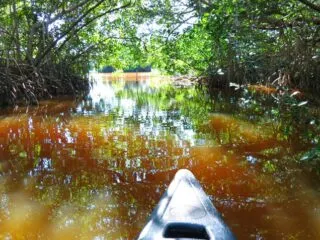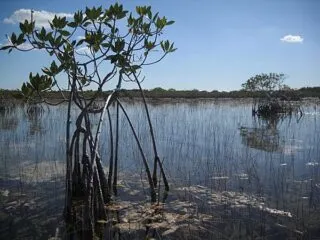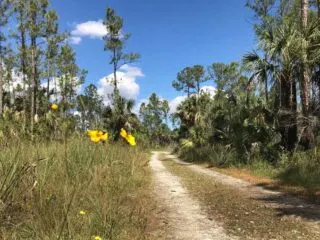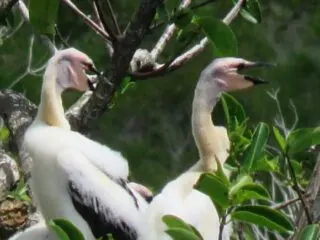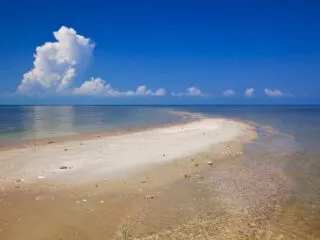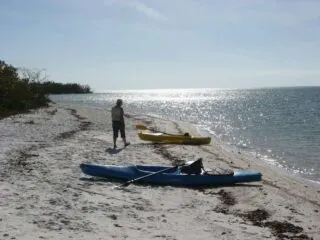Our Everglades National Park paddle on the Coot Bay/Mud Lake trail offered two hours of gorgeous scenery through magical mangrove tunnels. It also required about two hours of hard paddling against the wind.
Everglades
Kayaks and canoes are one of the best ways to surround yourself in the Everglades. Here’s a guide to the trails in the national park.
When crossing Florida on I-75, this hike is an easy way to experience the Everglades. You can hike for miles; even backpack to a campsite. Or stretch your legs for a short taste of the wild.
2018 is an exceptional one for nesting birds in Everglades National Park. Two super colonies– more than 25,000 birds clustered together– are nesting in the park for the first time since the 1940s. We couldn’t resist a visit. And while you can’t reach the super colonies, there is much to see on a spring visit.
EVERGLADES CITY — Whitewater paddling in the Everglades? Well, almost. The tides move in and out of the Ten Thousand Islands so quickly, the water rushes and ripples through the passes, so you need to catch the current going in the right direction if you want to make headway.
EVERGLADES CITY — One of my favorite Florida getaways is to boat out to the outer islands and camp for a weekend on a remote, pristine beach fronting the Gulf of Mexico.

